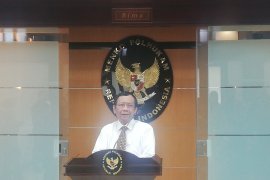However, explanations from the perspective of maritime security remain inadequate.
When viewed in its non-traditional aspect, maritime security is understood exactly the way it has been discussed so far in public -- a commando assault against terrorists.
Non-traditional maritime security includes piracy, armed robbery, IUU fishing and so forth. The traditional understanding of maritime security embraces, among other things, seaborne military invasion and aggression.
Large sections of the public, including the media, have seen this incident of hijacking as pirate activity. The fact remains, however, that what happened was much different than what is commonly defined as piracy in various laws.
To categorize a crime as piracy, according to the United Nations Convention on the Law of the Sea (UNCLOS) 1982, it must happen on the high seas, or, at least, in the exclusive economic zone.
As for the exact spot where this particular case happened, it was unquestionably in the Philippines territorial waters.
Similar argument also governs the so called piracy reports issued by the international piracy-watchdogs which see piracy flatly as an aggressive action that takes place at ports or anchorages.
Another aspect characterizing an action as piracy is that it should be for private ends.
The adventurism that the Abu Sayyaf group has indulged in against tugboat Brahma 12 and barge Anand 12 was apparently void of such a motive.
The group is a separatist movement or a herd of terrorists. Lastly, within the meaning of 1982 Conventions context, a piratical ploy must involve an attack by one ship against another.
In the case of these two ships, they might have been boarded by the attackers approaching from a skiff or a speedboat.
The uninvited party then took reins at the helm and steered their prey to their den. That does not qualify as piracy at all and will be considered as such under UNCLOS 1982.
What happened to the ships so far is clearly an armed robbery. Therefore, it is not considered an incident appropriate enough to kick in a clamp down on piracy.
In fact, the international community has devised another legal framework to fill this gap, namely, the Unlawful Acts Against the Safety of Maritime Navigation, popularly called SUA Convention, 1988.
The International Maritime Organization (IMO) came up with this instrument in response to the 1985 hijacking of the Italian-flagged cruise ship Achille Lauro by extremists in the Mediterranean Sea.
According to Robert C. Beckman, associate professor at the Faculty of Law, National University of Singapore, the attack on the ship demonstrated the weakness of the piracy provisions in the 1982 Convention (Rupert Herbert-Burns, Sam Bateman, Peter Lehr: 2009).
The importance of the 1988 SUA Convention lies in its ability to cover offences committed on the high seas or in an exclusive economic zone as well as those carried out at territorial sea and archipelagic waters of sovereign coastal states. Even acts happening up to the ports or anchorages are covered under it.
The offences cover, as enunciated in Article 3, seizure of, or exercise of control over, a ship by any form of intimidation, violence against a person onboard a ship, destruction of a ship or causing damage to a ship or to its cargo, placement on a ship of a device or substance that is likely to destroy or cause damage to that ship or its cargo and destruction of, causing serious damage to, or interference with maritime navigational facilities.
Unfortunately, the SUA Convention has no detailed explorations on how it should be implemented by the states (coastal states and state parties) that want to interdict, board or arrest the perpetrators.
It is a powerful tool in suppressing armed robbery against the ships but the ratification of the SUA Convention has been relatively slow.
As of June 2015, the Convention has 166 state parties. There are 29 UN member states that are still not party to it. One of them is Indonesia.
With the ascent of Mr. Joko Widodo to the presidency, this is the right time to accede to it, particularly as the presidents maritime vision is widely hailed.
The ratification will hopefully increase our credibility in the international maritime community that still considers Indonesia one of the hottest piracy/armed robbery spots in the world.
Additionally, there is significant progress happening regarding boarding provisions, thanks to the adoption of the 2005 SUA Protocol.
This protocol will create expedited procedures for boarding any suspect ships.
Apart from ratifying the SUA Convention, and, of course, its protocol, Indonesia is also urged to sign the 1999 Arrest Convention that has been gathering dust for quite long in government corridors.
As a port state embarking on a path to become the worlds next maritime center, we urgently need it to anticipate increasing maritime claims involving local owners and their overseas counterparts in the near future.
Currently, if such an incident happens, the owner and claimant usually seek settlement in foreign courts or through arbitration bodies.
Local judicial establishment is still perceived as lacking an understanding of maritime business.
Furthermore, since the government is eagerly implementing a stern policy on foreign-flagged fishing boats illegally entering Indonesian waters, the ratification of the Arrest Convention can act as a bulwark against criticism or legal backlash from opposing parties.
One drawback of the policy repeatedly cited by them is that the sinking of fishing boats was carried out without any court verdict.
*) Siswanto Rusdi is the Director of The National Maritime Institute (NAMARIN).
Reporter: Siswanto Rusdi*)
Editor: Aditia Maruli Radja
Copyright © ANTARA 2016











